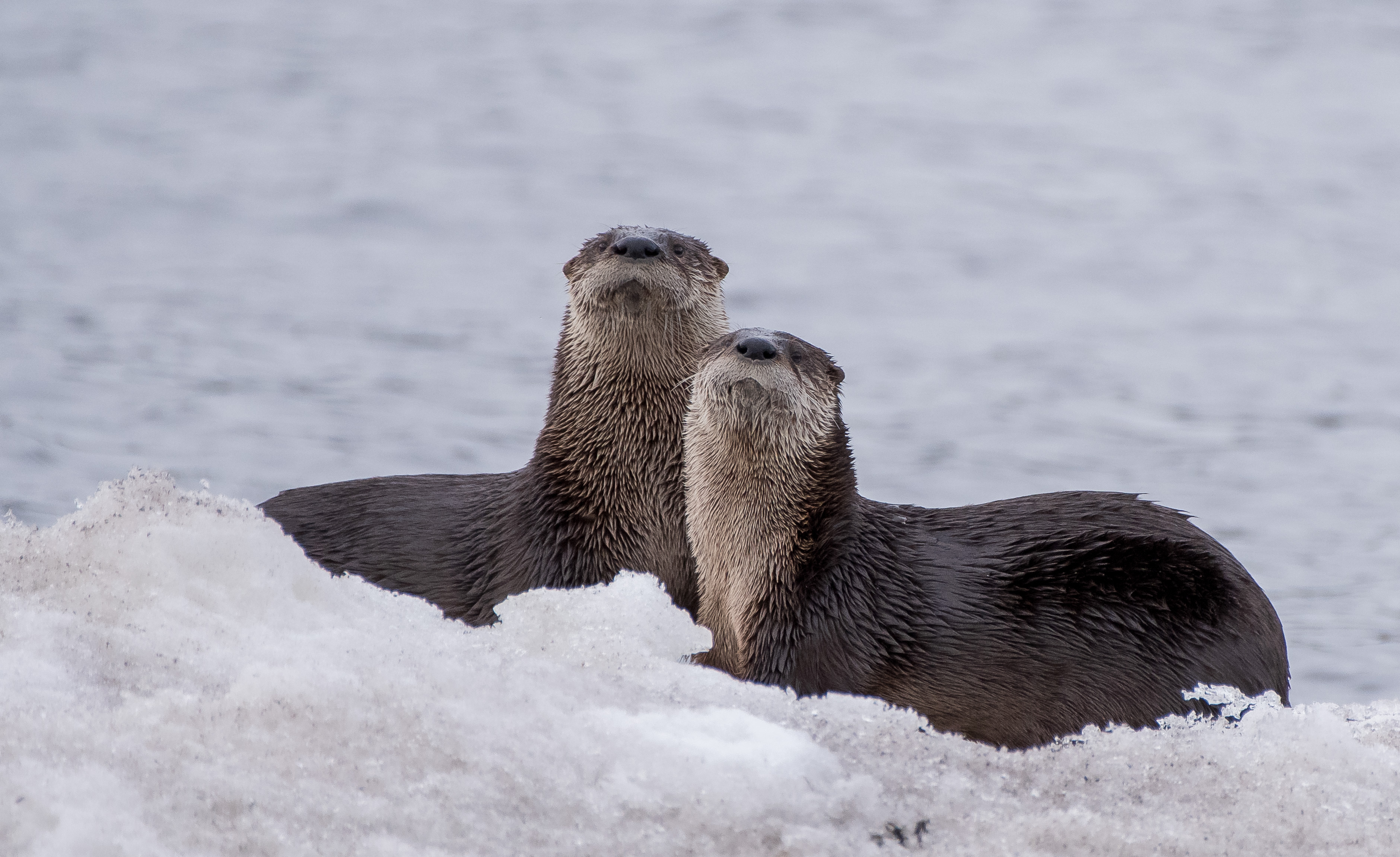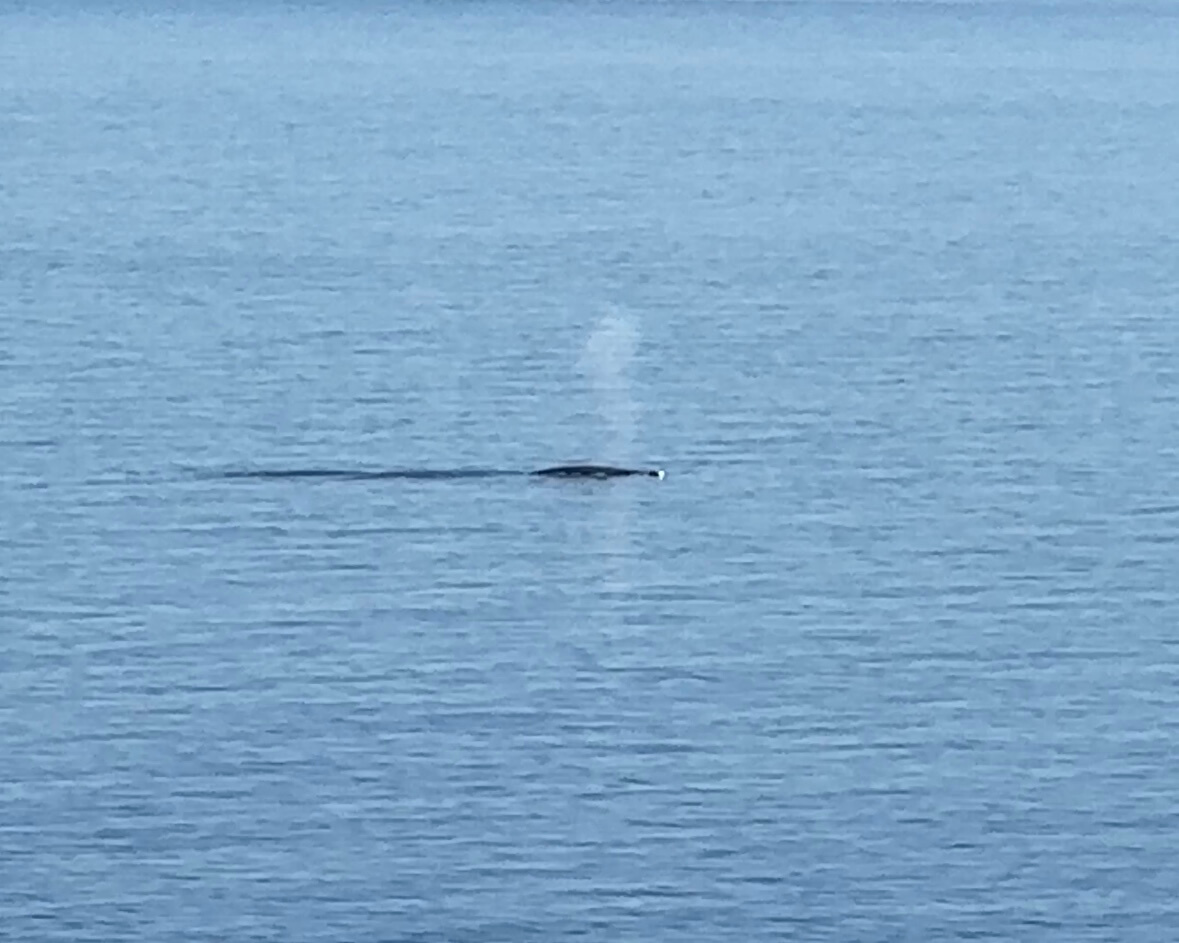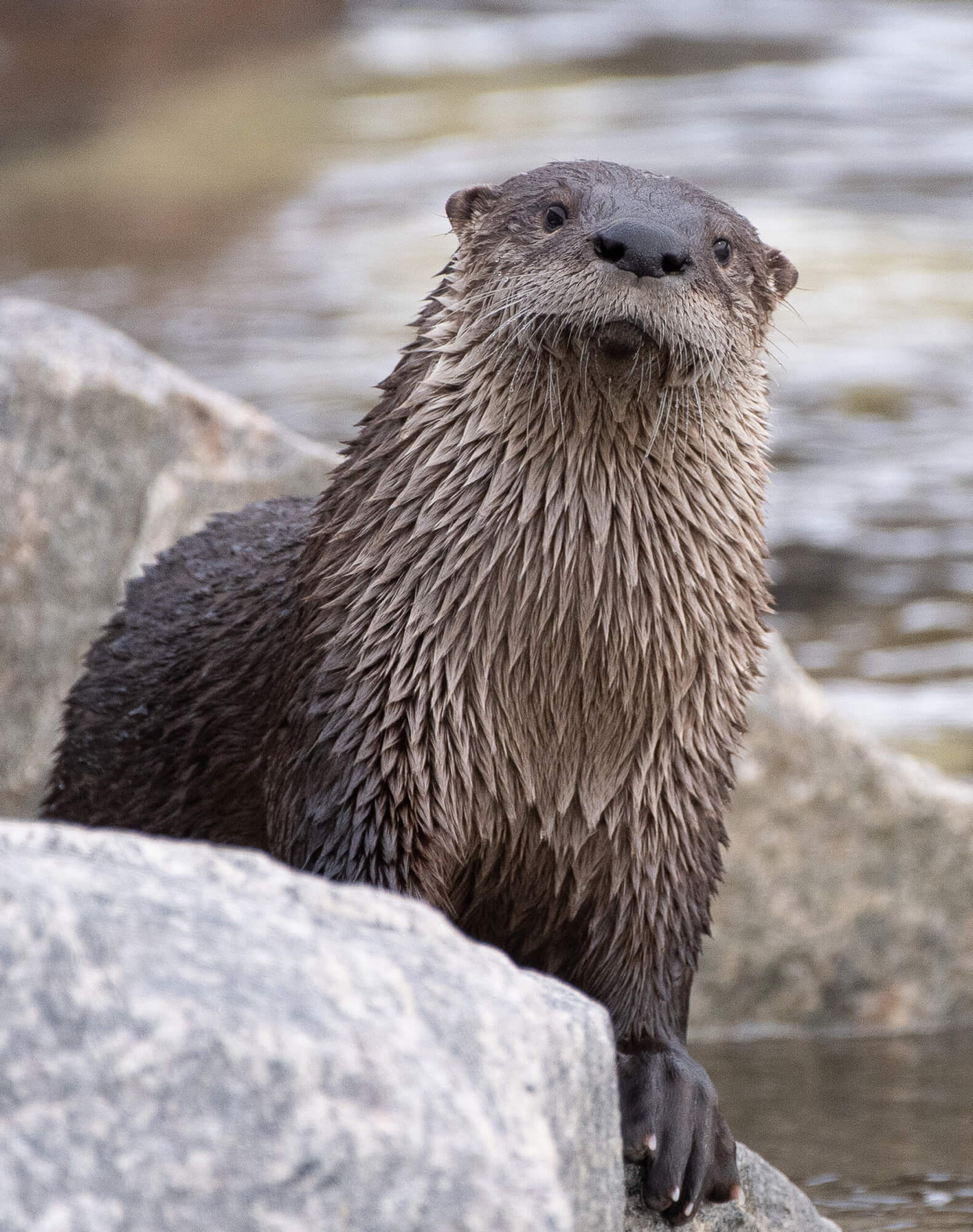A spring snow squall, minke whales slowly arriving, humpbacks breaching and river otters peering at the camera… The riverbanks were an exciting place to be this week!
Feeding minke whale and gatherings of seals
Last week marked the first sighting of a minke whale in the estuary, with one individual spotted in Franquelin. This week, another individual was swimming and actively feeding near the Tadoussac marina! From Cap de Bon-Désir in Les Bergeronnes, around a hundred or so harp seals were gathered, in addition to a handful of harbour seals.
Large spouts
While scanning the salt waters off the coast of Franquelin, a local resident had the chance to observe a humpback whale perform a full breach. That wasn’t the end of his good fortune, however, as he was also able to admire a fin whale. A blue whale was also reported in the area. “It seems like spring’s coming early this year,” he comments. Another marine mammal lover witnessed large blasts in the distance, not to mention the presence of several pinnipeds. “I spotted a few seals, including one that managed to find a chunk of ice to drift on.” On the other side of the river, the saltwater breeze brings rumours of unidentified spouts that were supposedly seen in Pointe-Saint-Pierre as well as near Grande-Grave on the Gaspé Bay side.
Belugas off the coast of Grand-Métis
Thanks to their spotting scopes, a couple of ornithologists were able to admire several stunning belugas from shore. “Observation of a group of belugas on March 6 about 1 km off the coast of Grand-Métis, Bas-Saint-Laurent region. We tallied 5 adults and 2 young (dark grey), including one accompanying an adult that appeared to be feeding; they quietly lingered in the same area and dived on occasion (we saw the tails). Ideal observation conditions: no wind, calm sea, sunny skies. Observed between 16:00 and 16:50.” Even if belugas are sometimes nicknamed “sea canaries,” their sighting is a nice change of pace from watching birds!
River otters
One lucky wildlife enthusiast enjoyed a fortuitous glimpse of an animal known for its boisterous behaviour. “We observed a pair of river otters drifting on a block of ice. What an awesome sighting!” This species inhabits the wooded shores of water bodies, where it feeds on fish, molluscs, insects and even frogs. When foraging for food under water, the river otter holds its breath for up to four minutes. Its heart rate falls while its nostrils and ears close. Births take place in March or April; perhaps these two individuals were about to have a litter?
Thanks to all our collaborators!
Special thanks go out to all our observers who share their love for marine mammals with us! Your encounters with cetaceans and pinnipeds are always a pleasure to read and discover.
On the water or from shore, it is your eyes that give life to this column.
Sophie Bérubé
Patrice Corbeil
Laetitia Desbordes
Diane Ostiguy
Renaud Pintiaux
Pascal Pitre
Andréanne Sylvain
Alexandre Terrigeol
Marielle Vanasse
And all those we left out!
Additionally, we would like to acknowledge the following teams for also sharing their sightings:
Mingan Island Cetacean Study (MICS)
Marine Mammal Observation Network (ROMM)
Quebec Marine Mammal Emergency Response Network: Status Report (QMMERN)
Group for Research and Education on Marine Mammals (GREMM)
Would you also like to share your observations?
Have you seen any marine mammals in the St. Lawrence? Whether it’s a spout offshore or just a couple of seals, drop us a line and send your photos to [email protected]!








